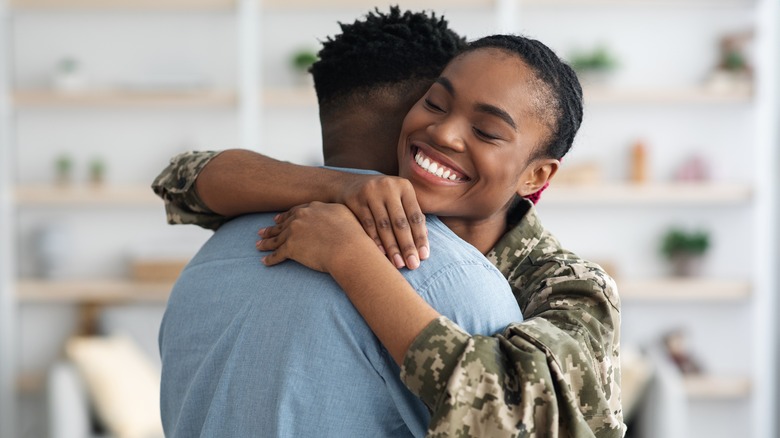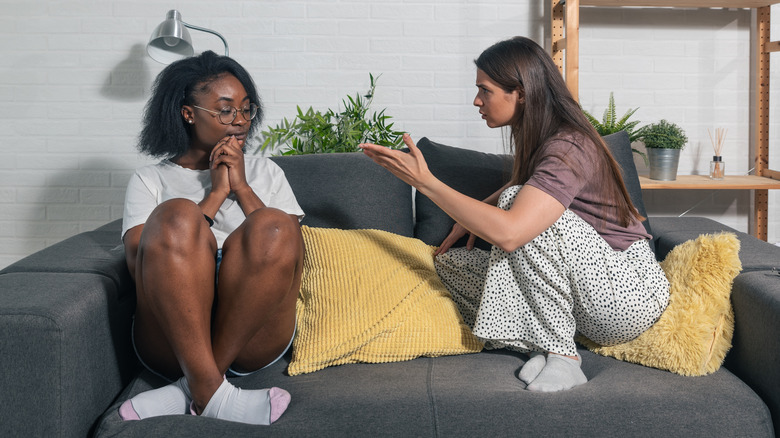What Is Co-Regulation In A Relationship?
You may be hearing an increasing amount of "therapy speak" in everyday conversations about our lives and relationships, whether it's the benefits of EMDR therapy or how to cope with anxiety. One term that could use some breaking down is co-regulation, which presents itself in literature on childhood development, facilitating a safe workplace, and how to improve relationships with friends and family.
But how do we implement co-regulation, and is it something we're capable of practicing on our own? According to one study, we have likely been emotionally co-regulating since infancy: the positive or negative emotions and physiological experiences of the adult and child may influence the levels of oxytocin, or the love hormone, in each other's nervous systems, in what researchers call calming cycle theory.
But to help regulate the emotions of those around you, self-regulation needs to be your first step. To reference RuPaul's famous quote on self-love and building relationships, if you don't regulate yourself, how the hell are you going to co-regulate with somebody else?
Begin with the body
Listening to your body's cues and checking in on whether you're able to resolve the physical symptoms of emotional overwhelm are major components of self-regulation. Well + Good's resident neuroscientist Dr. Caroline Leaf recommends breathing exercises, attempting to slow your heart rate, moving your body, or reading aloud to practice self-regulation. Psychology Today describes this process as becoming a "clear channel" — someone who is able to hold others experiencing a dysregulated state without inserting their own emotions or reactions.
Once you are in a regulated state, you can face your partner's acute feelings of stress or emotional overwhelm. And by paying attention to your partner and centering communication, you should be able to discern whether or not they could benefit from co-regulation practices. Dr. Leaf points to mirror neurons in the brain as the reason we are able to affect others with our own state of regulation, so completing physically grounding exercises together may be the easiest way to approach a partner's agitation, and safe touch with permission can also help. One study asserts that even simple guided changes in movement and posture can activate mirror neurons in another person and aid in emotional regulation.
Relationship Restoration notes that we are often unconsciously co-regulating or affecting our partner's emotional and physiological state. However, we can also dysregulate our partners when our own nervous systems enter fight, flight, or freeze mode.
Avoid co-dysregulation
After your partner's body is calm, you can both tackle the thought patterns that caused their distress together. The most important part of this step is attentive listening — allowing your partner the space to express themselves may even activate self-regulation by itself, per Psychology Today. Leading with curiosity and affirmation is important for creating the right conditions for co-regulation and is often referred to as attunement, aka tuning into someone's emotional state, according to a source on complex trauma.
However, Psychology Today warns against co-dysregulation, or feeding into your partner's hyper-aroused state with your own anxieties. You should continue to pay attention to your own emotional state while attempting to co-regulate — if you feel yourself getting activated, it may be necessary for you to repeat self-regulation techniques before supporting someone else.
After successfully attuning to your partner's current experience, it may be time to offer your help in creating strategies for moving forward. However, your partner may not be ready to hear ideas about how to feel better or resolve the issue at hand, and that's totally okay. Dr. Caroline Leaf recommends suggesting substitute thoughts for those causing a negative chain reaction and brainstorming with your partner to construct a new narrative. Being patient and non-judgmental are key during this step.
As your space for active co-regulation comes to a natural close, make sure the leave the conversation on a supportive note. Re-affirming the validity of their experiences and emotions will build deeper trust between you and your loved one.


